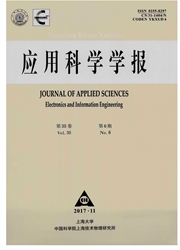

 中文摘要:
中文摘要:
在TC4钛合金铣削过程中采用拉伸装夹技术强化表面质量.建立平面应变的残余应力形成模型,分析了拉伸装夹改变加工表层残余应力的机理.采用单向机械式拉伸夹具,在HSM-600U型五轴超高速加工中心上进行了拉伸装夹铣削试验,铣削速度从38m/min到566m/min,拉伸装夹力从0到6330N,其他加工条件保持不变.测量了加工表面粗糙度和表层残余应力分布,讨论了拉伸装夹对加工表面质量的影响.实验结果表明,拉伸装夹基本不敷响表面粗糙度,但可以大大提高加工表面残余压应力并增大残余压应力层的厚度.
 英文摘要:
英文摘要:
Stretching fixation was proposed to improve was developed to analysis the residual stress variation mechanical stretching fixture, a stretching-fixation milling surface quality of TC4 Ti alloy. A plane strain model of stretching-fixation milling surface. With a unidirectional experiment was completed on an HSM-600U five axis super-high speed machining center. This was done with the milling speed ranging from 38 m/min to 566 m/min and the stretching force from 0 to 6 330 N, and other parameters being kept constant. Surface roughness and residual stress distribution were measured. Experimental results show that stretching fixation has little effect on surface roughness, while increases surface residual compression stress and thickness of residual compression stress layer significantly.
 同期刊论文项目
同期刊论文项目
 同项目期刊论文
同项目期刊论文
 期刊信息
期刊信息
